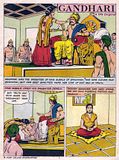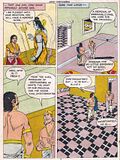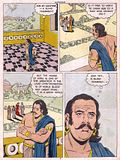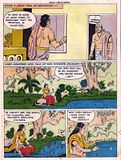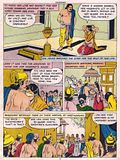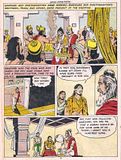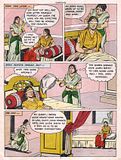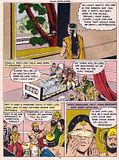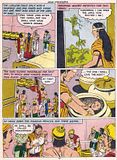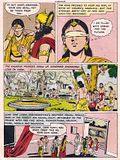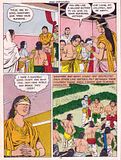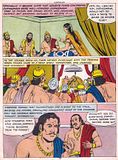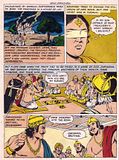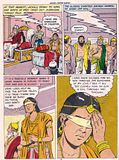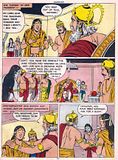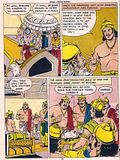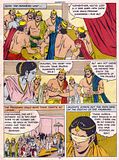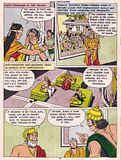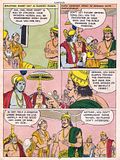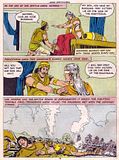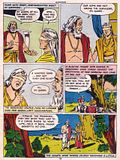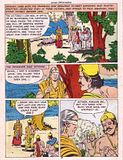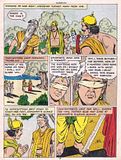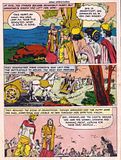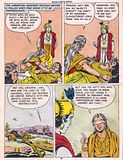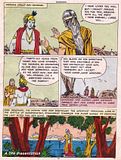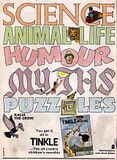 We spend January 1 walking through our lives, room-by-room, drawing up a list of work to be done, cracks to be patched. Maybe this year, to balance the list, we ought to walk through the rooms of our lives... not looking for flaws, but for potential.
We spend January 1 walking through our lives, room-by-room, drawing up a list of work to be done, cracks to be patched. Maybe this year, to balance the list, we ought to walk through the rooms of our lives... not looking for flaws, but for potential.A Relaxed Mind, A Peaceful Soul, A Joyful Spirit & Heart full of Love. All these are my Prayers for You......
Wish a Happy New Year
*****************************************************************
A folktale is a fictitious story told to amuse and amaze the listeners. The action takes place in a far-off time and place : “Once upon a time, in a faraway kingdom...” These stories feature kings and princesses, giants and dragons, fairies and sorcerers, magical objects and talking animals.
What does folktale mean?
Folktales are a type of folk literature (genre) that has 6 elements:
-They usually do not have an identifiable author or often retold.
-They originate as oral tellings.
-They have characters that are either all "bad" or all "good".
-They have fantastic or unrealistic elements (a talking computer....)
-A moral or lesson that is easy to figure out.
-The folktale is set in a vague, historical past "long ago"
(http://wiki.answers.com/Q/What_does_folktale_mean)
Definitions of Folktale on the Web:
• A traditional tale.
(www.louisianavoices.org/edu_glossary.html)
• A short narrative handed down through oral tradition, with various tellers and groups modifying it, so that it acquired cumulative authorship.
(h1.ripway.com/peter21ma/GlossaryofLiteraryTerms-MADOE.doc)
• A narrative form, as an epic, legend, myth, fable, etc., that is or had been retold within culture for generations and is well known through repeated storytelling, as an Anansi tale.
(www.nde.state.ne.us/READ/FRAMEWORK/glossary/general_f-j.html)
• A narrative that has been retold and is well known within a culture.
(classic.ycds.org/~lmavros/literary_glossary.htm)
• A simple, timeless story that deals with the customs,traditions, and beliefs of ordinary people.
(www.daffodil.ca/english/glossary_of_literary_terms_dir/glossary_of_literary_terms_3.html)
• A tale circulated by word of mouth among the common folk
(wordnet.princeton.edu/perl/webwn)
• The word folklore was first used by the English antiquarian William Thoms in a letter published by the London Journal Athenaeum in 1846.
(en.wikipedia.org/wiki/Folktale)
• A tale or story that is part of the oral tradition of a people or a place
(en.wiktionary.org/wiki/folktale)
• A traditional narrative, usually anonymous, handed down orally -- e.g., fables, fairy tales, legends, etc.
(http://urbanlegends.about.com/od/glossary/g/folktale.htm)
Some folktales :
What does folktale mean?
Folktales are a type of folk literature (genre) that has 6 elements:
-They usually do not have an identifiable author or often retold.
-They originate as oral tellings.
-They have characters that are either all "bad" or all "good".
-They have fantastic or unrealistic elements (a talking computer....)
-A moral or lesson that is easy to figure out.
-The folktale is set in a vague, historical past "long ago"
(http://wiki.answers.com/Q/What_does_folktale_mean)
Definitions of Folktale on the Web:
• A traditional tale.
(www.louisianavoices.org/edu_glossary.html)
• A short narrative handed down through oral tradition, with various tellers and groups modifying it, so that it acquired cumulative authorship.
(h1.ripway.com/peter21ma/GlossaryofLiteraryTerms-MADOE.doc)
• A narrative form, as an epic, legend, myth, fable, etc., that is or had been retold within culture for generations and is well known through repeated storytelling, as an Anansi tale.
(www.nde.state.ne.us/READ/FRAMEWORK/glossary/general_f-j.html)
• A narrative that has been retold and is well known within a culture.
(classic.ycds.org/~lmavros/literary_glossary.htm)
• A simple, timeless story that deals with the customs,traditions, and beliefs of ordinary people.
(www.daffodil.ca/english/glossary_of_literary_terms_dir/glossary_of_literary_terms_3.html)
• A tale circulated by word of mouth among the common folk
(wordnet.princeton.edu/perl/webwn)
• The word folklore was first used by the English antiquarian William Thoms in a letter published by the London Journal Athenaeum in 1846.
(en.wikipedia.org/wiki/Folktale)
• A tale or story that is part of the oral tradition of a people or a place
(en.wiktionary.org/wiki/folktale)
• A traditional narrative, usually anonymous, handed down orally -- e.g., fables, fairy tales, legends, etc.
(http://urbanlegends.about.com/od/glossary/g/folktale.htm)
Some folktales :
Download Comics (9.35 MB)
*****************************************************************
Download Comics (12.23 MB)
*****************************************************************
Download Comics (5.61 MB)
*****************************************************************
Download Comics (16.82 MB)
These are Ajay's contributions. All thanks & credits go to him.










